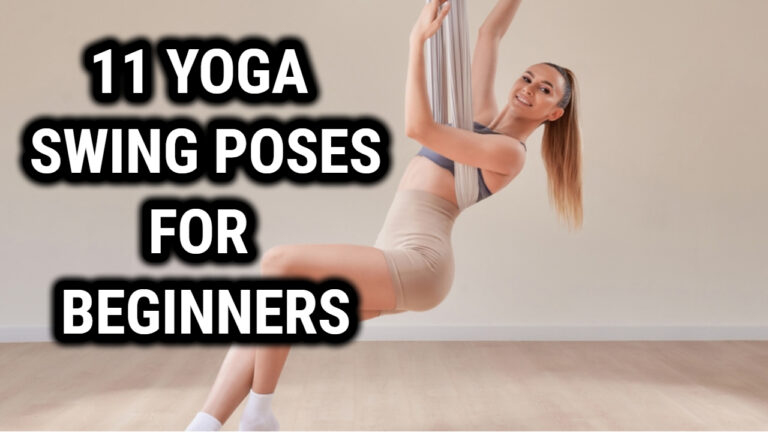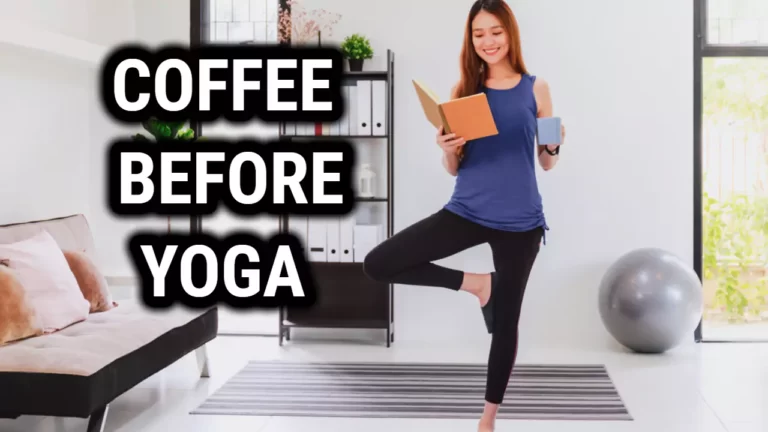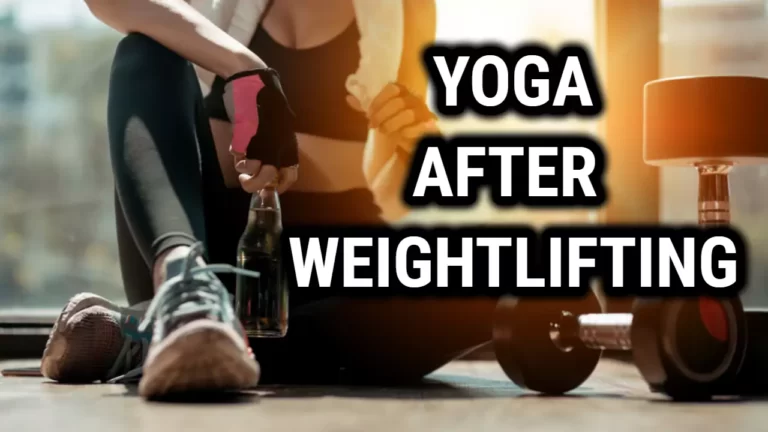Boost Your Muscle Strength with These Yoga Techniques

Yoga is a great way to build muscle strength and flexibility. It can be tailored to suit different levels of fitness and comes with a range of benefits, including improved posture, injury prevention and better overall health.
In this article, we’ll explore which types of yoga are best for building muscle strength. We’ll look at the poses that target specific muscles, as well as the benefits they offer.
So whether you’re an experienced yogi or just starting out, there’s something here for everyone!
Vinyasa Yoga
It was a coincidence that I found out about the amazing benefits of Vinyasa Yoga for muscle strength. As someone who is always looking to find different ways to build strength, this type of yoga was the perfect fit for me.
It focuses on controlling your breathing and physical alignment while doing the poses. Additionally, it helps you become more aware of your body by focusing on each movement and its effects on your overall health.
I noticed an increase in my muscle strength after just a few weeks of practicing Vinyasa Yoga. The poses provide a great workout that not only works your muscles but also improves balance, coordination and flexibility.
With regular practice, I have been able to maintain and even increase my muscle strength while gaining more control over my body movements.
Power Yoga
Power Yoga is a great way to strengthen your muscles. It combines elements of traditional yoga, such as meditation and postures, with strength training exercises and cardio moves. This type of yoga is designed to provide an intense full-body workout that builds muscle, increases flexibility, and boosts energy levels.
Some of the benefits of Power Yoga include:
- Improved strength and endurance
- Increased flexibility
- Improved balance and coordination
- Improved focus and concentration
- Reduced stress levels
Power Yoga is also an excellent complement to other forms of physical activity like running or weight lifting. The combination of postures and intensity can help you reach your fitness goals faster while reaping the mental benefits associated with yoga practice.
The best part? You don’t need any special equipment – just yourself and a mat! Power Yoga is suitable for all fitness levels and ages so it’s a great way to get the whole family involved in physical activity.
Hatha Yoga
The ancient practice of Hatha Yoga offers a unique combination of physical and mental benefits. It is both an art and a science, requiring strength and flexibility as well as concentration and discipline. With regular practice, the advantages of Hatha Yoga are plentiful.
The physical benefits of this type of yoga include improved muscle strength, increased flexibility, improved balance, stress relief, and improved posture.
On the other hand, the mental benefits include increased focus, heightened awareness of one’s body and breath, better control over emotions, increased self-esteem and acceptance, and an overall feeling of relaxation.
Practicing Hatha Yoga not only allows individuals to physically feel better but also helps them to become more aware of their mental state.
By providing an outlet for physical activity while enhancing one’s mental wellbeing through meditation and breathing exercises, Hatha Yoga is a great way to improve all aspects of health.
Regular practice can help reduce stress levels while increasing strength and flexibility. Furthermore, it can be beneficial in helping individuals find peace with themselves through mindfulness practices that promote self-awareness.
Iyengar Yoga
Iyengar Yoga is great for muscle strength because it focuses on alignment of the body in poses; it also incorporates the use of props to help achieve proper form. Plus, its emphasis on anatomy makes it easier to understand how to get into the poses.
Alignment
Iyengar Yoga is a great way to improve muscle strength and increase your overall fitness. It focuses on proper form, breath control, and alignment of the body in order to build strength.
This type of yoga emphasizes proper execution of poses, ensuring that your body is correctly positioned during each pose for optimal results. It also requires precise use of props like blocks and straps to make sure you’re in correct alignment for each asana or postures.
Through these methods, Iyengar Yoga can help you build muscle strength while protecting your joints from injury. With its focus on safety and proper form, Iyengar Yoga is an ideal practice for those looking to increase their muscle strength without sacrificing their wellbeing.
Props
Using props such as blocks, straps, and blankets can help you get into the correct positions for each asana or posture. This eliminates any guesswork when it comes to proper alignment and ensures that your muscles are properly engaged for maximum benefit.
Yoga mats also provide a firm surface to practice on and can make poses more comfortable.
Furthermore, meditation props like cushions and bolsters can help you find balance and stillness during your practice.
Overall, having the right equipment can make all the difference in your Iyengar Yoga practice – allowing you to achieve optimal results with less strain on your body.
Anatomy
It’s important to understand the anatomy of your body when practicing Iyengar Yoga, so you can properly engage the right muscle groups and maintain correct spinal alignment throughout each pose.
Knowing where your body is in space and how it moves will help you make the most of your practice and reach new levels of flexibility and strength.
You can use anatomical images or diagrams as visual aids to remind yourself of which muscles should be engaged, or take classes with instructors who can explain the finer points of each posture.
With this knowledge, you’ll be able to refine your practice and get even more out of every yoga session.
Core-Focused Yoga
Core-focused yoga is an excellent choice for improving muscle strength. It focuses on engaging the abdominal muscles, which helps build stability and strength in your core. In addition to physical benefits, core-focused yoga also offers mental and emotional benefits, as it encourages breath awareness and alignment awareness.
Here are some of the main effects of core-focused yoga:
- Increased muscular endurance
- Improved postural alignment
- Enhanced balance and coordination
- Strengthened abdominal muscles
By practicing core-focused yoga regularly, you can develop greater overall body awareness and learn how to use your body’s strength more effectively. The focus on breath awareness and alignment helps bring greater attention to each movement, allowing you to safely push yourself further while avoiding injury or strain on the joints and muscles.
With regular practice, you can significantly increase your muscle strength without compromising your safety or wellbeing.
Yin Yoga
Yin Yoga is a great way to build muscle strength. This type of yoga involves long-held poses that are designed to target the deep connective tissues and joints in the body. By holding poses for longer periods of time, Yin Yoga helps to create a stronger connection between mind and body and helps to increase muscle strength.
In addition to stretching and strengthening the muscles, this type of yoga also incorporates meditation techniques and breathing exercises to help bring awareness and relaxation into each pose. Through regular practice, Yin Yoga can help improve balance, flexibility, posture, and overall muscle strength.
Yin Yoga is an excellent practice for those looking to gain more strength in their muscles as it requires both physical effort and mental focus. Practicing this form of yoga regularly can help cultivate greater body awareness, encourage mindfulness and relaxation, as well as promote improved circulation throughout the body.
With consistent practice, Yin Yoga can be an effective way to gain greater muscular strength while also having a calming effect on the mind.
Best Yoga Poses for Muscle Strength
Plank Pose
Plank pose is a great pose for building overall body strength. It targets the core, shoulders, arms, and legs.
To perform this pose, start in a push-up position, with your hands directly under your shoulders and your feet hip-distance apart. Engage your core and hold for 30 seconds to a minute.
Warrior II Pose
Warrior II pose is a great pose for building lower body strength. It targets the legs, hips, and glutes.
To perform this pose, start in a standing position with your feet hip-distance apart. Step your left foot back and turn it out to a 90-degree angle. Bend your right knee and extend your arms out to the sides. Hold for 30 seconds to a minute and then switch sides.
Chair Pose
Chair pose is a great pose for building leg strength. It targets the quads, hamstrings, and glutes.
To perform this pose, start in a standing position with your feet hip-distance apart. Bend your knees and lower your hips as if you are sitting in an imaginary chair. Hold for 30 seconds to a minute.
Downward-Facing Dog Pose
Downward-facing dog pose is a great pose for building upper body strength. It targets the arms, shoulders, and upper back.
To perform this pose, start on your hands and knees. Lift your hips up and back, straightening your arms and legs. Hold for 30 seconds to a minute.
Side Plank Pose
Side plank pose is a great pose for building core strength. It targets the obliques and the muscles along the sides of your body.
To perform this pose, start in a plank position. Shift your weight onto your right hand and rotate your body to the left, stacking your left foot on top of your right foot. Lift your left arm up towards the ceiling. Hold for 30 seconds to a minute and then switch sides.
Incorporating these yoga poses into your fitness routine can help you build muscle strength and improve your overall physical health. Remember to listen to your body and modify the poses as needed to avoid injury.
Tips for Practicing Yoga for Muscle Strength
Yoga is a great way to build muscle strength and improve overall fitness. However, it’s important to practice safely and effectively to avoid injury and maximize results. Here are some tips to keep in mind when practicing yoga for muscle strength:
- Start with a warm-up: Before diving into intense yoga poses, it’s important to warm up the body to prevent injury. Simple stretches like neck rolls, shoulder shrugs, and side bends can help loosen up the muscles and prepare the body for more challenging poses.
- Focus on alignment: Proper alignment is key to getting the most out of yoga poses and avoiding injury. Make sure to listen to your body and adjust your alignment as needed. If you’re not sure if you’re doing a pose correctly, don’t hesitate to ask your instructor for guidance.
- Breathe deeply: Deep breathing is an important part of yoga practice, and can help you stay calm and focused during challenging poses. Inhale deeply through the nose, and exhale slowly through the mouth. Try to synchronize your breath with your movements to help you flow smoothly from one pose to the next.
- Use props if needed: Yoga props like blocks, straps, and blankets can help you get deeper into poses and improve your alignment. Don’t be afraid to use props if you need them, and make sure to ask your instructor for guidance on how to use them effectively.
- Stay hydrated: Drinking plenty of water before, during, and after your yoga practice can help keep your muscles hydrated and prevent cramping. Make sure to bring a water bottle with you to class and take sips as needed.
By following these tips, you can practice yoga safely and effectively to build muscle strength and improve your overall fitness.
Also Read: The Best Yoga Pose to Reduce Your Waistline in Just 2 Months
Frequently Asked Questions
What Type Of Clothing Should I Wear While Doing Yoga?
When engaging in yoga, it’s important to wear clothing that allows for flexibility and comfort. This is especially true if you’re utilizing yoga props or focusing on body alignment.
Donning attire that’s too tight or restrictive can limit your movements and make it difficult to get the most out of your practice.
Selecting garments that breathe and move with you can help you achieve all the benefits of a successful session while keeping you comfortable at the same time.
How Long Should I Practice Yoga Each Day?
The amount of time you spend practicing yoga each day can vary depending on your goals and experience level.
For beginners, it’s recommended to start with 10-15 minutes of basic stretching techniques and breathing exercises.
As you become more comfortable, you can increase the duration of your practice up to an hour or more.
However, it’s important to remember that consistency is key—even if you only have a few minutes per day, that can still make a big difference.
Are There Any Specific Food Restrictions I Should Follow When Practicing Yoga?
When practicing yoga, it is important to follow a mindful eating plan.
According to a recent study, more than 87% of people who practice yoga also follow some type of diet to support their practice.
This means that understanding the basics of a yogic diet can help you get the most out of your yoga practice.
While there are no hard and fast rules for creating a ‘yoga diet’, some key elements that should be included are mindful eating, focusing on whole foods, and avoiding processed or refined foods as much as possible.
By following these guidelines and being mindful when selecting food choices, you can ensure that your body has all the nutrients it needs to maximize muscle strength while doing yoga.
Is It Safe To Practice Yoga If I Have A Pre-Existing Medical Condition?
Practicing yoga can be an incredibly beneficial form of exercise, offering both physical and mental benefits, as well as stress relief.
However, it’s important to take safety into consideration if you have a pre-existing medical condition.
Before starting a new yoga practice it’s best to consult with your doctor to ensure that the type of yoga you plan on doing is safe for you.
This will help ensure that you avoid any potential risks or problems associated with your existing medical condition.
Are There Any Age Restrictions To Practicing Yoga?
Practicing yoga does not have any age restrictions, making it suitable for people of all ages who want to increase their energy levels and build muscle strength.
However, if you have a pre-existing medical condition, it is always important to consult your doctor before beginning any exercise regimen.
People of any age can benefit from yoga’s breathing techniques and gentle movements to help them increase their strength over time.
Related Read: Amazing Benefits Of Hatha Yoga For Weight Loss
Final Words
Yoga is a great way to increase your muscle strength and flexibility.
Aim to practice yoga for 20-30 minutes daily, but start with shorter sessions and work up as you gain strength and confidence.
To stay healthy, keep any special dietary restrictions in mind when selecting foods to eat before and after your practice.
Finally, there is no age limit when it comes to yoga – even if you’re an octogenarian, you can reap the benefits of this ancient practice! By incorporating regular yoga sessions into your life, you’ll soon notice improved physical strength and increased mental clarity – truly timeless rewards!





